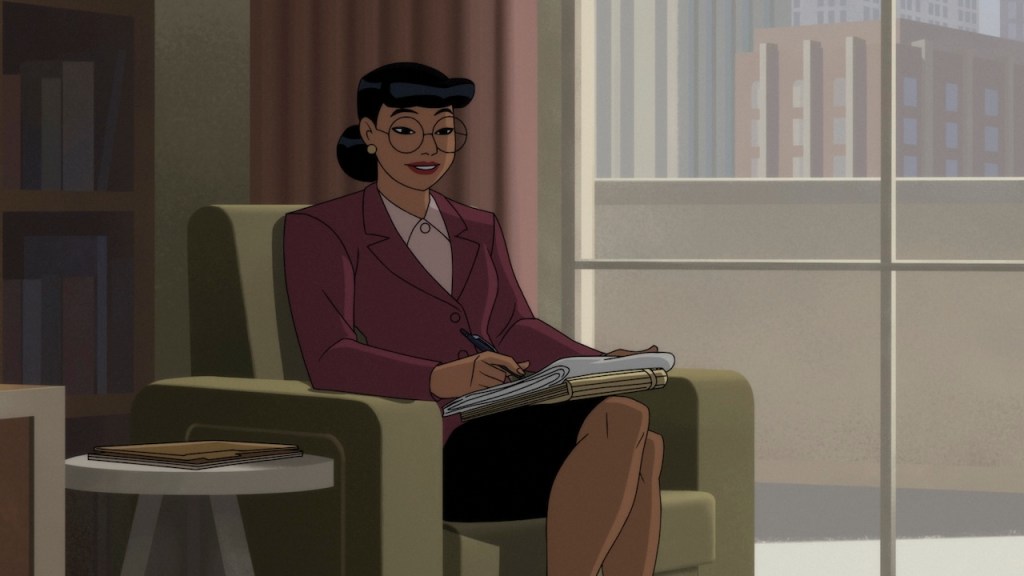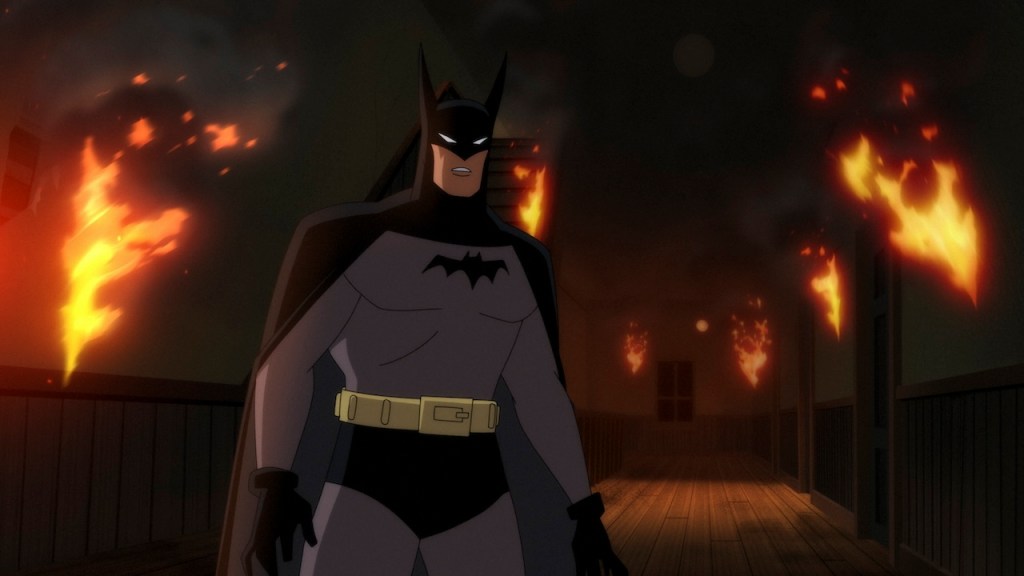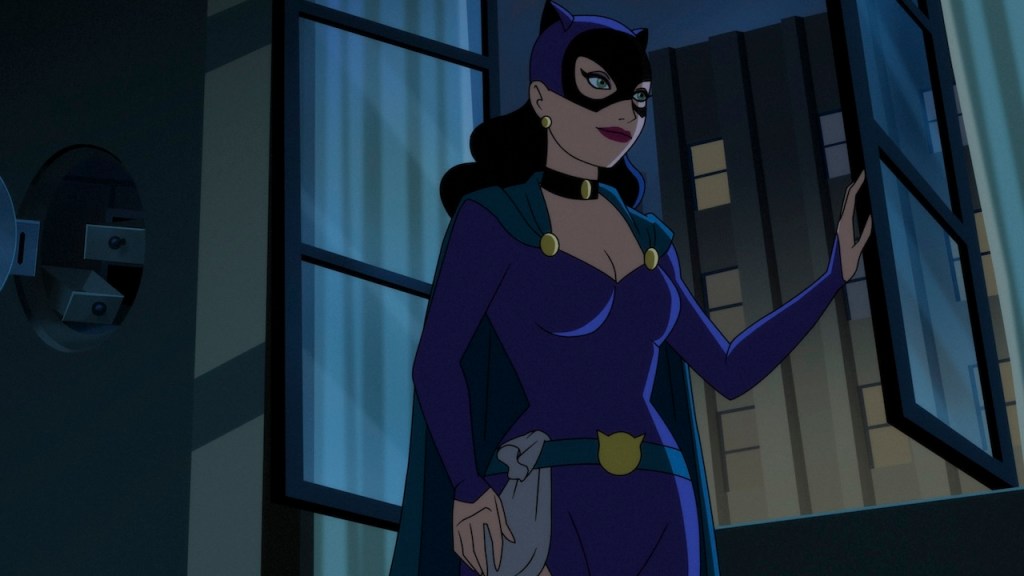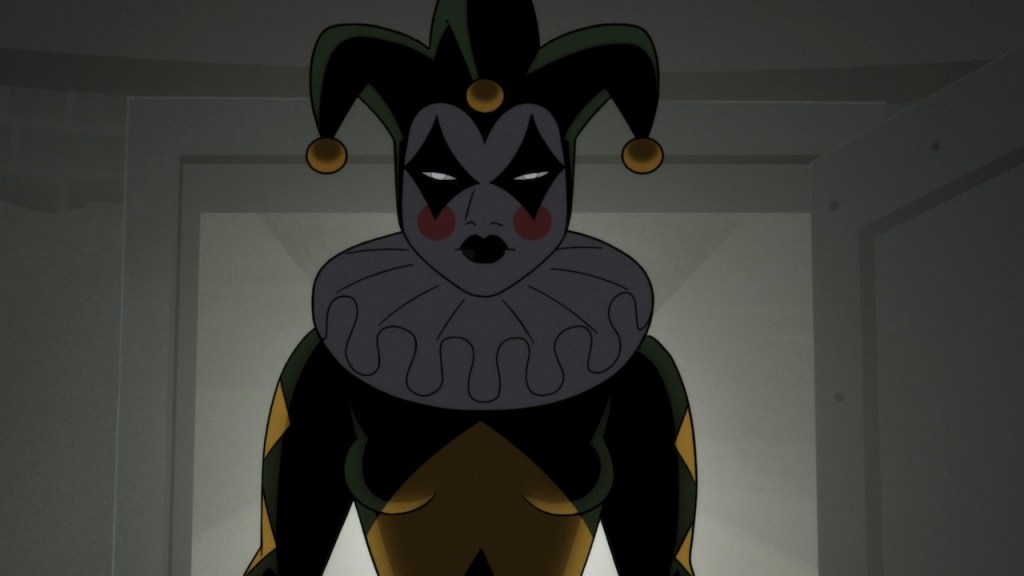As wonderful as X-Men ’97 has been, even the most devoted Marvel Zombie has to admit that the gold standard of superhero animation remains Batman: The Animated Series. Created by Bruce Timm and Eric Radomski, the show told some of the all-time greatest stories about the Dark Knight, and even launched an ongoing universe with Justice League, Batman Beyond, and Static Shock.
So when Warner Bros. announced Batman: Caped Crusader from Timm, fans took notice, especially with J.J. Abrams and The Batman director Matt Reeves on board as producers. Despite a near disaster when Warner Bros. CEO David Zaslav declined to distribute the completed series, as is his wont, the show found a home on Amazon Prime Video.
Even better, we now know when the series is premiering on the streamer: Aug. 1. We also have our first look at the characters and setting of Batman: The Caped Crusader, which blends the familiar with the all-new designs.

Gotham City
Where Batman: The Animated Series, like the Tim Burton Batman movies that inspired it, remained ambiguous about its time frame, Caped Crusader is committing. Leaning into the character’s roots in early DC Comics and film noir, the show will take place in the 1940s.
“James [Tucker, character designer] and I are both really big fans of movies from that era, so we decided to really lean into that in terms of the clothes, the cars, the architecture, and the level of technology,” Timm told EW. “Early on, we decided there would be no computers and no cell phones. That changed everything.”
Thus, there’s a classic Hollywood gleam to the characters and the city, complete with matinee idol and screen-siren charm of Bruce Wayne and Selina Kyle.

Batman
With a lithe body instead of the barrel-chested figures of The Animated Series, the new Batman certainly jumps out at viewers. Then again, “new” may not be the right word. With his tiny gloves and outwardly pointed ears, this Caped Crusader has a lot in common with the original Bill Finger and Bob Kane design that debuted in 1939’s Detective Comics #27.
At this point, it’s not clear if Caped Crusader will be another Year One-type story, but with Timm and Tucker taking their cues from Golden Age comics, it seems likely. To that end, the show will avoid the psychological complexity that writers have given Bruce Wayne over the years, making him a distinct and interesting character. Timm has a more straightforward take for Caped Crusader.
“He’s a really weird human being. He’s not obsessed with his parents’ murder, but it changed him in a way where he’s still not adjusted to being a human being,” Timm explained. “He’s literally Batman; inside, that’s who he is. Whenever he’s Bruce Wayne, that’s not just him with a mask off, that’s him wearing a person suit. He’s trying to pretend to be something that he’s not.”

Catwoman
Like Batman, Catwoman goes back to her roots. Gone are the black or gray skin-tight suits she sported in other shows and movies.
Instead, she’s wearing a stylish purple dress, which is very similar to her second costume in the comics. This version of Catwoman retains her green cape, a delightful element quickly dropped from later outfits on the page.
“We didn’t want to do the B:TAS Catwoman or the version that Ed Brubaker and Darwyn Cooke did in the early 2000s with the practical leather jumpsuit,” Timm admitted. “So we thought, well, let’s go all the way back to the beginning. I love the original look that she had in the ’40s. It’s purple!” While they didn’t quite go all the way back, as the OG Selina called herself the Cat and wore a fuzzy kitten head over her face, looking kinda like a sports mascot, her Caped Crusader costume is still a stylish get-up.

Commissioner Jim Gordon
Commissioner Gordon is African American in the show, but he otherwise follows the usual model, with glasses, mustache, and neat brown suit.
In most Batman stories, Gordon is a voice of moral clarity (give or take an extra-marital affair or two), the one good cop in Gotham City. The Gordon of the first comics by Finger, Kane, and Jerry Robinson featured an even less dynamic Gordon, a stodgy old man with a pipe who shared case details with his friend Bruce Wayne.
That said, Caped Crusader‘s other key influence has a very different approach to the police. In film noirs such as The Maltese Falcon and The Big Heat, the line between cops and criminals is thin. If the show adopts the shades of gray from those movies, then it will indeed be a very different take on Gordon.

Clayface
The Clayface moniker has been used by many different baddies in the Batman universe. Viewers of Batman: The Animated Series probably best know Clayface as Matt Hagen, an actor whose use of face-altering chemicals change him into a big goopy monster that can (briefly) take any form.
Hagen comes from the comics, as do various other figures who become the goopy version of Clayface. But the very first Clayface, introduced in 1940’s Detective Comics #40, had a more grounded origin. In that story, actor Basil Karlo would disguise himself as his movie characters to commit crimes.

Harley Quinn
Easily the most the most radical change involves a character who does not have a Golden Age counterpart. Of course, if anyone can change Harley Quinn, it’s Bruce Timm, who co-created the character with Paul Dini for Batman: The Animated Series.
In addition to making Harleen Quinzel Asian American, Timm and Tucker gives the personality “a basic flip.” As he told EW, “The original Dr. Quinzel was a little bit more serious, and then when she became Harley, she got really goofy and weird. So we thought, what if we reverse that? When she’s Dr. Quinzel, she’s a little bit more whimsical and fun, and then when she’s Harley Quinn, she’s scary.”
The new design reflects that switch, with Harley forgoing her bright red togs for yellow and black. The most frightening part is her her face make-up, with dark black colorings over her eyes making her much scarier.
Batman: Caped Crusader debuts on Amazon Prime on Aug. 1.
The post Batman: Caped Crusader Just Revealed New Versions of Classic Dark Knight Characters appeared first on Den of Geek.


0 Commentaires